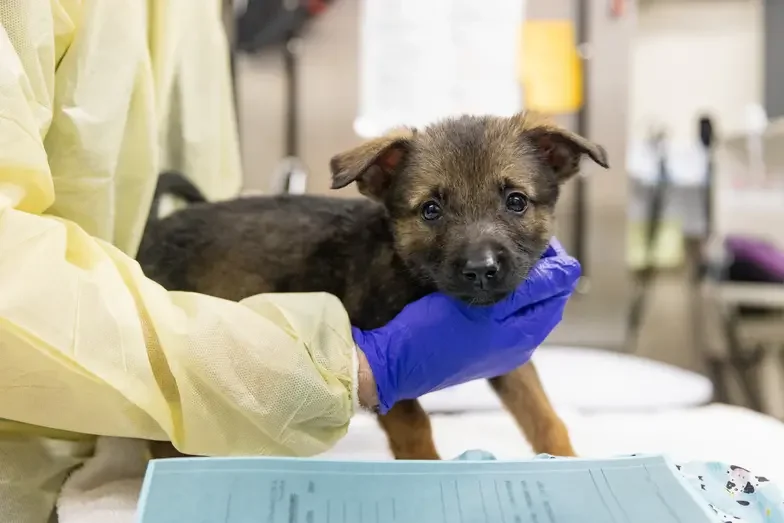New York State Companion Animal Care Standards Act Training

The New York State (NYS) Companion Animal Care Standards Act elevates the care for cats and dogs in sheltering organizations across NYS.
Modules in ASPCA Learn’s, NYS Companion Animal Care Standards Act training course provide information pertaining to the training topics specified in the “Personnel Training Requirements” section of the law (Section 422). Such training will be helpful to staff members and volunteers who have direct animal care responsibilities.
How to Enroll
- Login now or create an account, then search for the series in the content library or come back here and use the direct links.
- Mobile browsers are not supported. Get the free Litmos app for Apple or Android
- Use this guide to navigate the app.
- Find support in the FAQs or email us.
Courses
In this course, you'll learn the principles of low-stress handling and their beneficial impact on the well-being of the animals in your care. You will also learn how to perform kennel sanitation and animal handling tasks to minimize stress for animals as well as improve safety for animal caregivers.
This course is designed to help meet part of the training requirements defined in New York State Companion Animal Care Standards Act for Shelters and Rescues (N.Y. Agric. & Mkts. Law § 422(3)(a).
In this course, you’ll explore the most common infectious diseases affecting shelter animals, including their causes and symptoms. You’ll learn how these diseases spread within shelter environments and discover practical strategies to reduce transmission—such as vaccination at intake, proper sanitation, managing capacity for care, and minimizing animal stress. You’ll also gain a clear understanding of biosecurity measures like personal protection equipment (PPE) and its effective implementation. Finally, you’ll learn how to differentiate between isolation and quarantine, important concepts when working to decrease the spread of infectious disease.
This course was designed to help meet part of the training requirements defined in New York State Companion Animal Care Standards Act for Shelters and Rescues (N.Y. Agric. & Mkts. Law § 422(3)(b)).
In this course, you’ll learn what zoonotic diseases are and why they matter in a shelter environment. You’ll identify examples—like ringworm, leptospirosis and rabies—and understand how they’re transmitted and what factors increase the risk of exposure. You’ll also explore practical ways to protect yourself and others, including the use of personal protective equipment (PPE) and sanitation protocols, helping you create a safer environment for both animals and people.
This course was designed to help meet part of the training requirements defined in New York State Companion Animal Care Standards Act for Shelters and Rescues (N.Y. Agric. & Mkts. Law § 422(3)(c)).
As a shelter or rescue volunteer or employee, you’re on the front lines of animal protection in New York State. In this course, you will learn related definitions and gain the knowledge you need to recognize, respond to, and report signs of animal cruelty, abuse and neglect—because your actions can change lives.
This course was designed to help meet part of the training requirements defined in New York State Companion Animal Care Standards Act for Shelters and Rescues (N.Y. Agric. & Mkts. Law § 422(3)(d)).
In this course, you’ll learn the difference between cleaning, disinfecting, and sanitation—and why each plays a vital role in preventing disease transmission in shelters. You’ll explore the importance of maintaining a clean environment and discover proper protocols for sanitizing animal enclosures, travel crates, transport vehicles, equipment, and shared spaces. By the end, you’ll be equipped to implement effective sanitation practices that protect both animals and people.
This course was designed to help meet part of the training requirements defined in New York State Companion Animal Care Standards Act for Shelters and Rescues (N.Y. Agric. & Mkts. Law § 422(3)(e)).
In this course, you’ll learn to recognize common body language signals in dogs and cats and understand what those signals reveal about their emotional state. You’ll be able to distinguish between normal behaviors and signs of stress, helping you respond appropriately in a shelter setting. You’ll also discover how to adjust your handling techniques based on an animal’s body language to ensure safety and reduce distress—for both the animals and yourself.
This course was designed to help meet part of the training requirements defined in New York State Companion Animal Care Standards Act for Shelters and Rescues (N.Y. Agric. & Mkts. Law § 422(3)(f)).
In this course, you’ll discover which data points need to be collected and recorded. You’ll learn about the importance of recording medical and behavioral information and treatments, as well as disclosure of such information. You’ll also explore the importance of summary data, including annual intake and outcome statistics for cats and dogs. Lastly, you’ll understand how accurate data collection and its routine evaluation support better decision-making that improves animal welfare and shelter efficiency.
This course was designed to help meet part of the training requirements defined in New York State Companion Animal Care Standards Act for Shelters and Rescues (N.Y. Agric. & Mkts. Law § 422(3)(g)).
